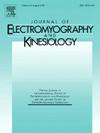MVMD-TCCA: A method for gesture classification based on surface electromyographic signals
IF 2.3
4区 医学
Q3 NEUROSCIENCES
引用次数: 0
Abstract
Gesture recognition plays a fundamental role in enabling nonverbal communication and interaction, as well as assisting individuals with motor impairments in performing daily tasks. Surface electromyographic (sEMG) signals, which can effectively detect and predict motor intentions, are integral to achieving accurate gesture classification. This paper proposes a method, the multivariate variational mode decomposition and the two-channel convolutional neural network with added attention mechanism (MVMD-TCCA), to enhance the accuracy of gesture classification for motor intention recognition. The MVMD technique is utilized to decompose and fuse sEMG signals, enriching signal content and improving feature representation. To further optimize gesture classification performance, the convolutional block attention module (CBAM) and CrissCross attention mechanism are integrated into the neural network, enabling superior learning of local and spatial features. The experimental results show that the MVMD-TCCA method achieves an average classification accuracy of 85.09 % on the NinaPro DB2 dataset, representing a 13.46 % improvement compared to the use of the original signal, and an average classification accuracy of 97.90 % on the dataset collected from 15 subjects, reflecting a 1.70 % improvement over the original signal. These findings underscore the critical role of accurate gesture classification in facilitating daily task assistance for cerebral infarction patients, demonstrating the potential of the proposed approach.
MVMD-TCCA:一种基于表面肌电信号的手势分类方法
手势识别在非语言交流和互动中起着至关重要的作用,也有助于运动障碍患者完成日常任务。表面肌电图(sEMG)信号可以有效地检测和预测运动意图,是实现准确手势分类的必要条件。本文提出了一种基于多变量变分模式分解和添加注意机制的双通道卷积神经网络(MVMD-TCCA)的方法来提高动作意图识别中手势分类的准确率。利用MVMD技术对表面肌电信号进行分解和融合,丰富了信号内容,改善了特征表征。为了进一步优化手势分类性能,将卷积块注意模块(CBAM)和交叉注意机制集成到神经网络中,实现对局部和空间特征的优越学习。实验结果表明,MVMD-TCCA方法在NinaPro DB2数据集上的平均分类准确率为85.09%,比使用原始信号提高了13.46%;在15个受试者的数据集上的平均分类准确率为97.90%,比使用原始信号提高了1.70%。这些发现强调了准确的手势分类在促进脑梗死患者日常任务协助中的关键作用,证明了该方法的潜力。
本文章由计算机程序翻译,如有差异,请以英文原文为准。
求助全文
约1分钟内获得全文
求助全文
来源期刊
CiteScore
4.70
自引率
8.00%
发文量
70
审稿时长
74 days
期刊介绍:
Journal of Electromyography & Kinesiology is the primary source for outstanding original articles on the study of human movement from muscle contraction via its motor units and sensory system to integrated motion through mechanical and electrical detection techniques.
As the official publication of the International Society of Electrophysiology and Kinesiology, the journal is dedicated to publishing the best work in all areas of electromyography and kinesiology, including: control of movement, muscle fatigue, muscle and nerve properties, joint biomechanics and electrical stimulation. Applications in rehabilitation, sports & exercise, motion analysis, ergonomics, alternative & complimentary medicine, measures of human performance and technical articles on electromyographic signal processing are welcome.

 求助内容:
求助内容: 应助结果提醒方式:
应助结果提醒方式:


